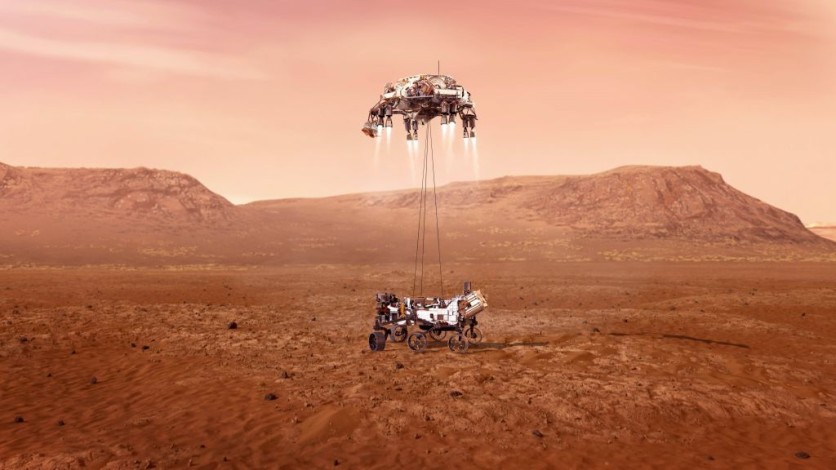
NASA's Ingenuity helicopter made it to the Seitah region on Mars, an area filled with rocks and dunes, after it was deemed too treacherous for NASA's Perseverance rover to drive across.
NASA's Ingenuity Reaches Seitah Region
NASA's Ingenuity accompanied the Perseverance rover on its mission to Mars to cover more ground. In this case, Ingenuity came in handy as it flew over the Seitah area on July 5 and took some pictures of the key spots.
In less than three minutes, the tiny helicopter was able to finish a task that would have taken NASA's Perseverance rover months to complete, according to Slash Gear.
The quick jump to Seitah was Ingenuity's ninth flight on Mars, but this is the first time that the helicopter helped the rover in its hunt for ancient signs of life at Mars' Jezero Crater.
The helicopter, which weighs only four pounds, arrived on Mars in February. It was attached to the rover's underside, and it became the first object to take powered flight on another planet in April.
The initial set of flights of Ingenuity served as complex practice tests to demonstrate who off-world rotorcraft can operate around places that rovers can't go.
On July 5, the engineers of NASA pushed Ingenuity's limits. In 166 seconds, the helicopter flew 11mph for almost a half-mile or 2,050 feet. It is a far greater distance than its flight in June, which recorded 525 feet.
The helicopter buzzed around the different corners of Seitah. It took photos of its borders, where junctures between other rock formations make for some of the most intriguing targets in NASA's hunt for microbial life.
Ingenuity chief pilot Harvard Grip called the task a big leap in terms of what they have accomplished before.
The team went between 625 meters apart, which is massive compared to what they have done before.
The photos that Ingenuity took will help engineers at NASA's Jet Propulsion Laboratory to decide whether to send Perseverance on a path to get some rock samples in that particular region, according to Space.com.
Grip added that the mission is designed to be high risk, high reward, which means it will make sense for the engineers to take those risks because of the potential payoff.
Ingenuity's Flight Mission
Ingenuity dipped into one of Seitah's craters, slowed its speed, then ascended slopes while going on a zig-zagged path. Its autonomous navigation algorithms were written to anticipate flying over only flat surfaces, so engineers made changes in the code and convinced Ingenuity that the bumpy features were flat.
The changes in the code demanded several simulations in preparation for the mission, with many thinking the helicopter could possibly spin out of control under the new flight directions.
Fortunately, no accidents were recorded, and Ingenuity successfully reached the targeted rock formation on Seitah.
Sending a small helicopter across a dangerous field of thick sand to gather rocks is a huge time-saver for the Perseverance team.
According to NASA, if scientists can get the images of the Seitah Region early, they can begin the science process earlier than scheduled, and they can start making observations and interpretations to learn more about the area.
Related Article: NASA's Perseverance Rover AutoNav System Lets It Go Where It Wants
This article is owned by Tech Times
Written by Sophie Webster
ⓒ 2025 TECHTIMES.com All rights reserved. Do not reproduce without permission.




